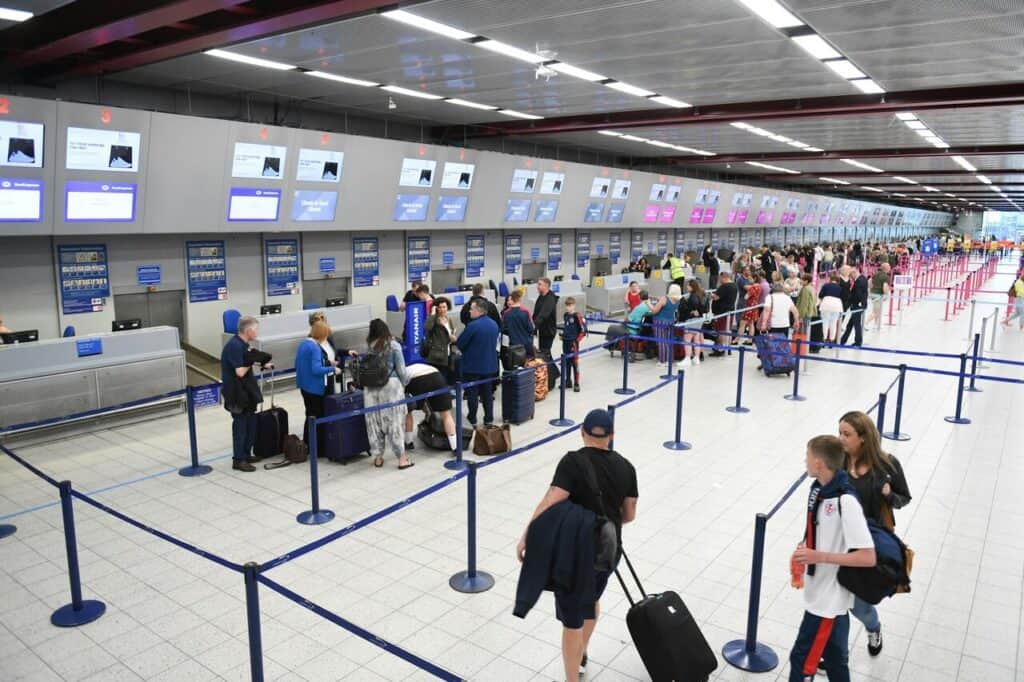We may earn money or products from the companies mentioned in this post. This means if you click on the link and purchase the item, I will receive a small commission at no extra cost to you ... you're just helping re-supply our family's travel fund.

Fall is the season of hesitation for travelers. Prices drop, alerts buzz, and you start to wonder: should you click “book” now or wait for that one perfect deal? It’s a tug-of-war between logic and instinct, and airlines know it well.
Here’s the thing fall fares follow patterns, but your brain doesn’t. While prices fluctuate based on data, demand, and timing, human behavior adds another layer: fear of missing out versus fear of overpaying. Understanding that mental game can help you book smarter, not just cheaper.
Let’s break down what’s really happening when you’re glued to flight trackers, how fall pricing cycles work, and the signals that tell you it’s time to stop searching and finally book that ticket.
1. The Emotional Trap of “Waiting for the Perfect Fare”

Every traveler has hit refresh one too many times. You spot a decent price but hesitate, hoping tomorrow it’ll drop a little more. That’s not strategy; it’s emotion disguised as discipline. Fall flight deals play right into this psychology because prices do dip, but not predictably. Airlines test the market just as travelers test their patience.
When you keep searching, you enter what behavioral economists call the “sunk time trap.” You’ve already invested effort, so you hesitate to act unless it feels like a clear win. But flight pricing algorithms don’t reward patience; they reward timing.
How FOMO Shapes Booking Decisions
Fear of missing out is a powerful motivator. You see “only 3 seats left at this price” and panic-book—or you hold off, thinking a better deal will come tomorrow. Both reactions are emotional, not rational. Airlines count on this back-and-forth to keep demand flexible.
The key is to separate urgency from opportunity. Real discounts often come midweek or after major holidays when fewer people are searching. Let data guide you, not that adrenaline rush.
The Myth of the Perfect Price
There’s no “perfect” fare- only a fair one that meets your comfort level and schedule. Once you find a ticket within 10–15% of the average low, it’s time to book. Obsessing beyond that point drains energy and adds stress.
Think of it like timing the stock market: you might get lucky once, but over time, consistent decision-making beats emotional guessing.
2. The Fall Flight Cycle: Why Prices Drop and Spike

Autumn is a sweet spot for airfares. Summer crowds have cleared, and holiday travel hasn’t started yet. Airlines adjust prices to fill those in-between seats but only for a short window. Knowing when that window opens can save you more than endless app refreshing.
Data from flight trackers show fares typically dip six to nine weeks before departure during fall. After that, they climb fast as seats fill and business travelers return.
The Tuesday Rule and Other Myths
You’ve probably heard to “book on a Tuesday.” It’s not wrong, but it’s not a law either. Tuesday and Wednesday often show lower prices because airlines match weekend sales early in the week but that pattern varies by route.
Instead of chasing one magic day, focus on the pattern: midweek searches, off-peak travel dates, and avoiding holidays can make a bigger difference than the calendar itself.
Spotting the True Low Point
Price tracking tools like Hopper or Google Flights can reveal patterns, but the real low point usually lasts less than 48 hours. Once prices dip to a new low and stay steady for a day or two, that’s your signal.
Waiting longer rarely helps especially if your route is popular for fall foliage or college towns. Those tickets rebound fast once local demand kicks in.
3. Booking Confidence: How to Know It’s Time to Click

Knowing when to stop searching is a skill and it starts with setting limits. Before you even look at flights, decide your target price and your maximum wait time. That simple move shifts control back to you instead of the algorithm.
Psychologically, this also reduces regret. When you decide based on your rules instead of constant comparisons, you’re less likely to feel you “missed out.”
Setting a Personal Booking Threshold
Set a range-say, $250 to $280 for a domestic flight and once the fare lands within that zone, book without hesitation. Studies show travelers who set pre-booking limits report higher satisfaction, even if prices drop slightly afterward.
Your peace of mind is worth more than chasing a $15 discount.
Using Alerts Without Obsession
Flight alerts are useful, but they can also fuel compulsive checking. Limit notifications to one or two reliable sources and ignore daily noise. The goal isn’t perfection; it’s efficiency.
When you treat booking like a decision instead of a chase, you regain the joy of planning instead of worrying about saving another 2%.
When Waiting Becomes Losing: The Psychology of “Good Enough”
At some point, every deal hunter needs to embrace “good enough.” Prices are dynamic, but your time and mental energy are finite. The smarter travelers know when to stop calculating and start packing.
Booking at the right time isn’t just about saving money-it’s about saving yourself from the stress loop that turns travel planning into homework. Once your fare feels fair, book it and move on. The real reward is knowing you’ll actually be on that flight, not still tracking it.